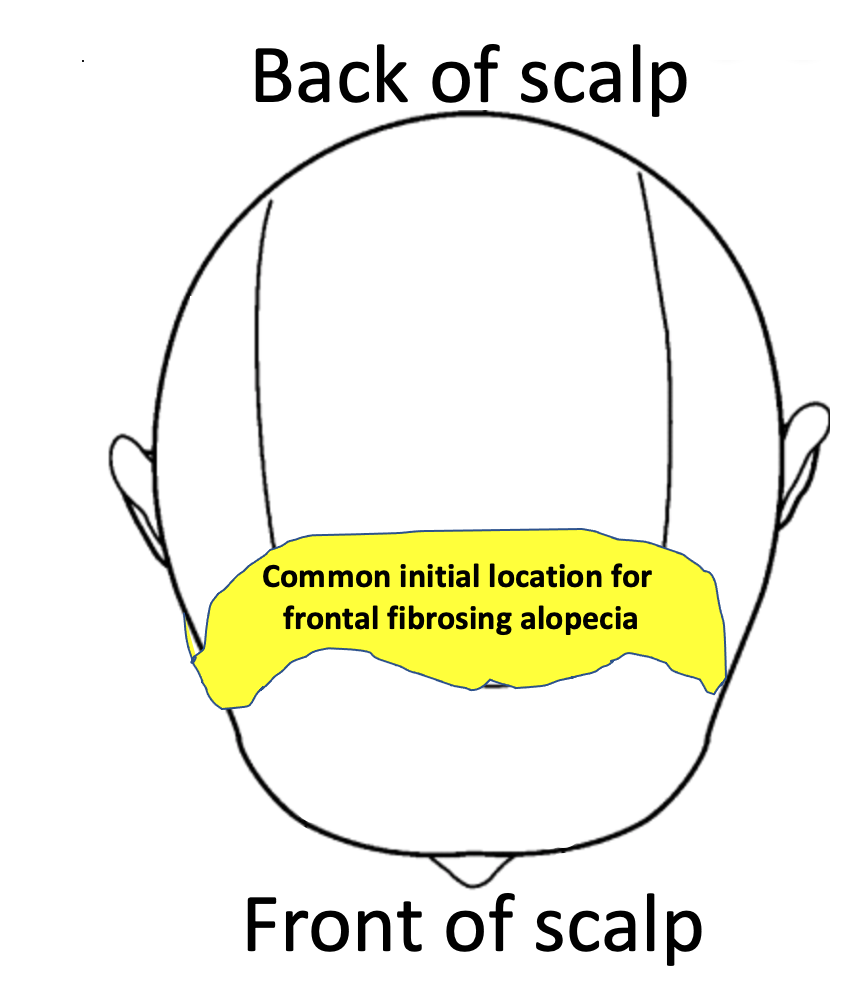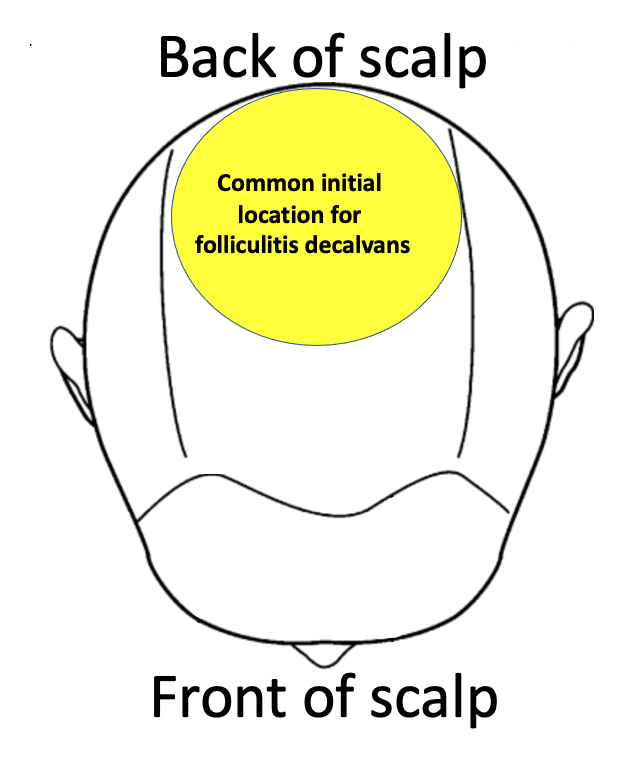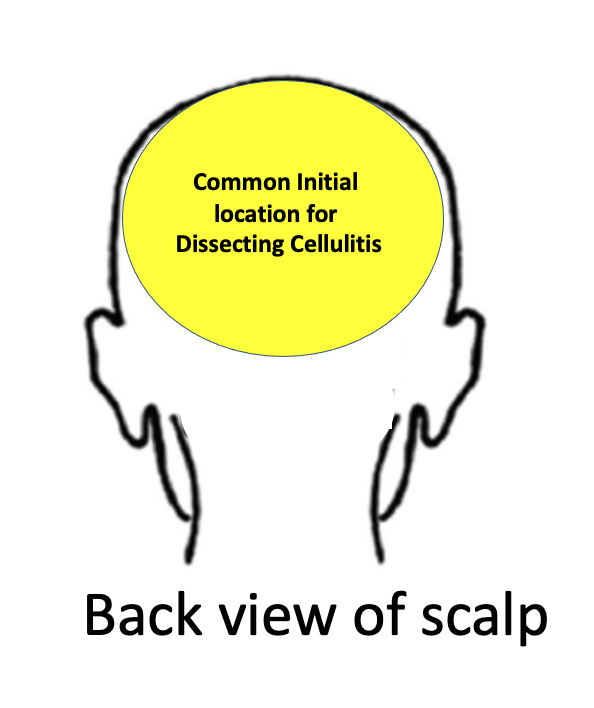National Scarring Alopecia Awareness Month (Day 4, Fact 4): Location, Location, Location
Location of Initial Hair Loss is Often Different in Different Types of Scarring Alopecia
National Scarring Alopecia Awareness Month (Day 4). Scarring alopecias often cause hair loss in specific areas of the scalp when they first develop. They don’t typically cause hair loss in a “random” manner. Some areas of the scalp are much more commonly affected.
Location, Location, Location: Where to these scarring alopecia often start ?
In lichen planopilaris and central centrifugal cicatricial alopecia (CCCA) the central scalp is commonly affected in the early stages. Other areas can become involved as the disease progresses:
The early stages of frontal fibrosing alopecia (FFA) typically affect the frontal hairline and sideburn areas in front of the ears (along with the eyebrows):
Folliculitis decalvans often affects the crown and mid-scalp areas in the very early stages of the disease:
Dissecting cellulitis commonly affects the vertex and occipital scalp when the disease first presents. Over time, more widespread involvement is possible:
Why are some areas favoured over there areas ?
The exact reason why certain areas are preferentially affected is not entirely clear. Hormones, patterns of nerve innervation, differences in the types of hairs in different areas of the scalp and body may have a role.
It is helpful to understand where these conditions first present in order to know what sort of scalp findings to look for when one examines the scalp in the clinic.
PRACTICAL EXAMPLES
Example 1: A 44 year old male who comes in to clinic with hair loss in the crown accompanied by scalp burning, itching, tenderness and bleeding most likely has folliculitis decalvans (FD). Lichen planopilaris would also be a possibility but the location of the hair loss together with symptoms and bleeding point to a diagnosis of FD.
Example 2: A 41 old women of African descent who presents to the office with concerns about her central hair loss has CCCA until proven otherwise.
Example 3: A 53 year old woman with new onset frontal scalp hair loss as well as eyebrow loss most likely has FFA. Of course, other diagnoses are possible in this scenario, but FFA is most definitely at the very very top of the list.
This article was written by Dr. Jeff Donovan, a Canadian and US board certified dermatologist specializing exclusively in hair loss.






